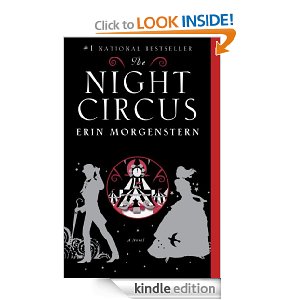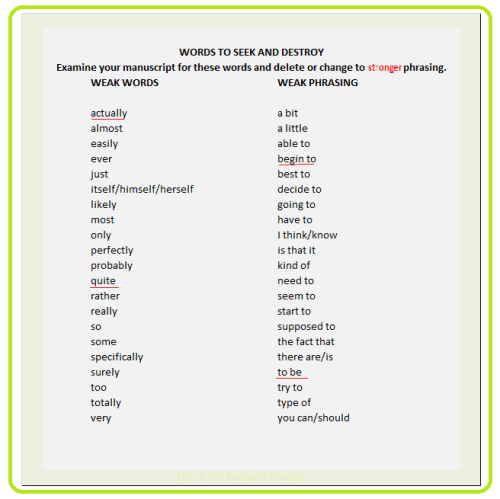 What is the passive voice? What is the active voice? In this case, we are talking about how a story is told.
What is the passive voice? What is the active voice? In this case, we are talking about how a story is told.
Passive voice offers separation from the action. The reader becomes a witness to the events, rather than a participant. This voice can produce unclear, wordy sentences if an author isn’t careful. Using the active voice produces clearer, more concise sentences.
Consider the simple act of and elderly woman mailing a letter. Perhaps the letter tells her niece the truth about a family secret.
In the passive voice, the subject (the letter) is not active but is acted upon by the verb, or passive (dropped, was mailed). It is a telling mode: Georgia stopped at the mailbox on the corner. She opened the slot and dropped the letter in. Turning, she walked home. The letter was mailed—there was no changing it now. Georgia sat on the porch, contemplating the wisdom of having done so.
The letter was mailed–Georgia performs the only action, and her thoughts are the important part. In literary fiction, the author might want the reader’s attention on the Georgia’s internal journey. Passive delivery is less straightforward, leaning toward allegory and symbolism rather than action.
Georgia stopped at the mailbox on the corner. She opened the slot, watching as the letter fell in. Turning, she walked home and sat on the porch, unsure if she had done the right thing. Most readers of genre fiction, such as mysteries, romance, and sci-fi, want active prose as they want to be involved in the action. In the active voice, the attention is still on Georgia, but the letter is active–it falls in. It does something.
Sometimes we combine the two and don’t realize we’re doing so: Georgia stopped at the mailbox on the corner and opened the slot, watching as the letter fell in. Turning, she walked home, unsure if she had done the right thing. The letter was mailed—there was no changing it now.
How we combine active and passive phrasing is part of our signature, our voice. By mixing the two, we choose where to direct the reader’s attention.
We want to avoid wordiness. Overuse of forms of to be (is, are, was, were) leads to wordiness. Long, convoluted passages turn away most readers.
In a writer’s forum I frequent, a frustrated author said, “My editor keeps hijacking my manuscript. She won’t let me use ‘there was,’ but I don’t know how to tell my story without using it.”
She wasn’t trying to rewrite his story for him. What his editor was trying to do was encourage him to use an action verb in place of a form of to be. Acted, as opposed to acted upon.
In my own work, I go on a search and destroy mission, looking for weak words and timid phrasing. Adverbs frequently contribute to excessive wordiness and passive phrasing, so I do a global search for the letters “ly.” Sometimes my manuscript will become a mass of words with yellow highlighted “ly’s.”
When it comes to adverbs, most often simply removing and replacing them with nothing strengthens the prose. But having said that, don’t be an idiot and remove every adverb—use common sense. It’s a daunting task, but I look at each adverb and see how they fit into that context.
These are the words to watch for and reconsider how you have used them:
 Weak prose tells the story, holds the reader away from the immediacy of the experience. Passive voice also tells a story, but when done well, it isn’t weak–done well it can be beautiful and immersive.
Weak prose tells the story, holds the reader away from the immediacy of the experience. Passive voice also tells a story, but when done well, it isn’t weak–done well it can be beautiful and immersive.
Take Erin Morgenstern’s beautiful fantasy, The Night Circus. It’s a perfect example of passive voice blending with active. The novel is also a lightning rod of sorts, polarizing readers. Genre fantasy purists decry her lush, beautiful prose, and lack of direct conflict between the two magicians, while readers of literary fiction enjoy her lush, beautiful prose, and the deeper story that underlies the politely wage war between two magicians.
Poetry is often written in the Passive Voice. This gives the author the opportunity to apply rhythm and cadence to her words.
A good writing exercise is to take a short paragraph and write it in both the passive and active voices. You can learn a lot about how you think as a writer when you try to write in an unfamiliar style.








Hi Connie!
I’ve trained myself to get rid of each instance of passive voice in editing. I want the reader to be swallowed up by the narrative – or better yet, I want my narrative to swallow up the reader 😉 I also make it a rule never to use adverbs, not even in a first draft. This only applies to fiction, however, my blog posts and comments are a free for all…
Have a happy Monday!
Caith Esra
LikeLiked by 1 person
Hello! Yes–it’s all about what you as the author want for your readers. We tend to write what we gravitate to.
LikeLiked by 1 person
Such a handy piece on the topic. One of the best explanations of it I’ve read. Thank you for breaking to down like this.
LikeLiked by 1 person
Hello! I’m glad you found it useful 😀
LikeLike
Yes. I find myself to slip into passive unintentionally sometimes. Catcher in the Rye is almost entirely in the passive voice, is there a reason you think that works? Perhaps because the characters voice is so well established as an thing which life happens to.
LikeLiked by 1 person
Salinger’s work is a told story, from the main character, Holden’s POV. It’s mostly in the passive voice because we see it through his thoughts. But it’s not weak, by any means. The story and the prose is powerful, a great example of the way literature was written in the mid 20th century. He blended active with passive seamlessly. I think many modern readers wouldn’t like it, were it published today, but the community of literary fiction readers would still find it exceptional.
LikeLike